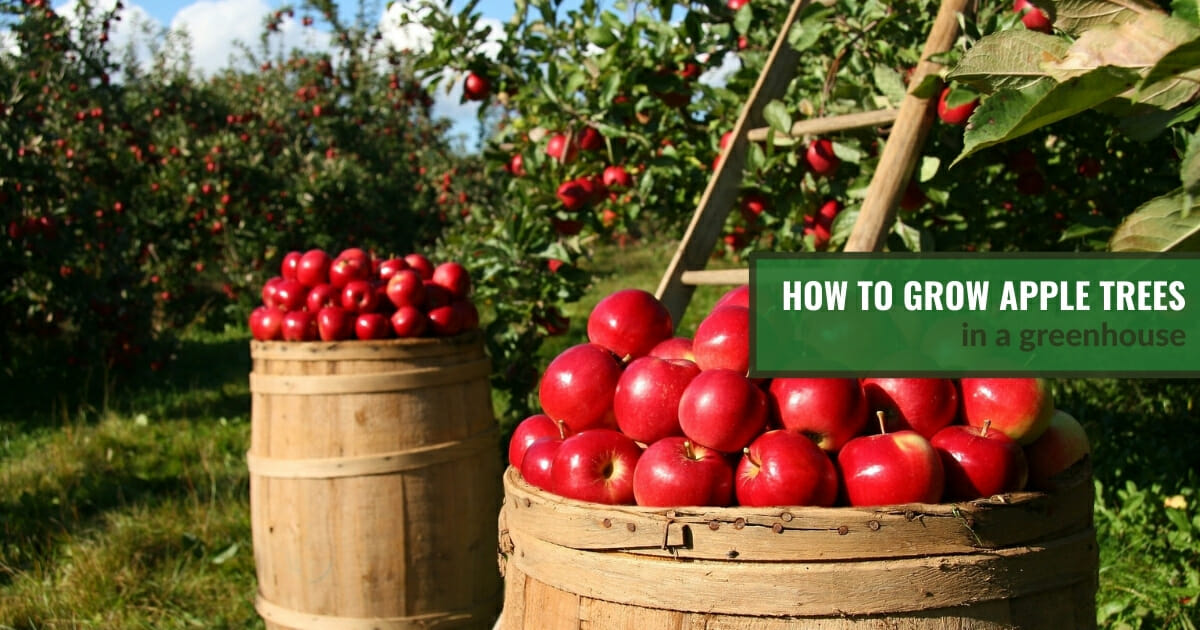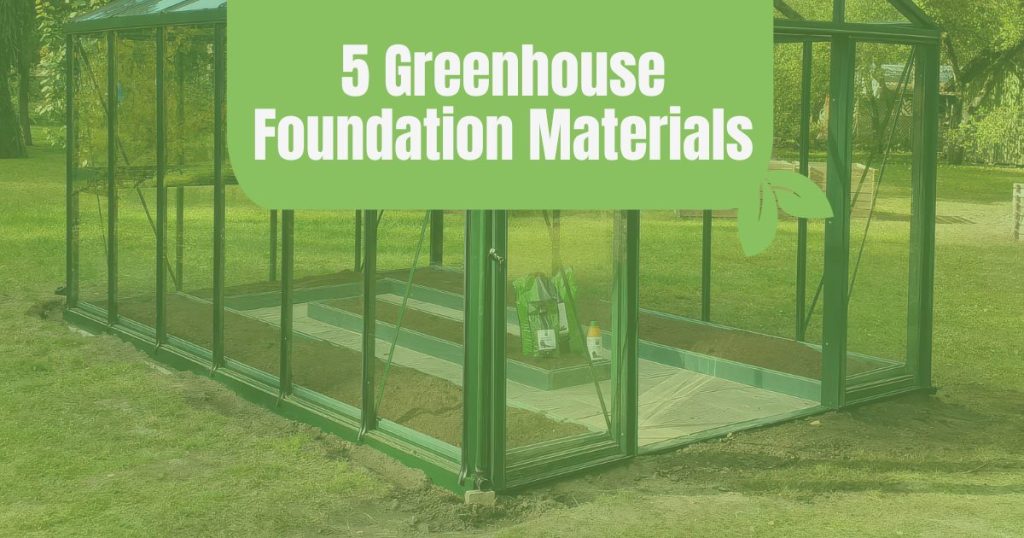
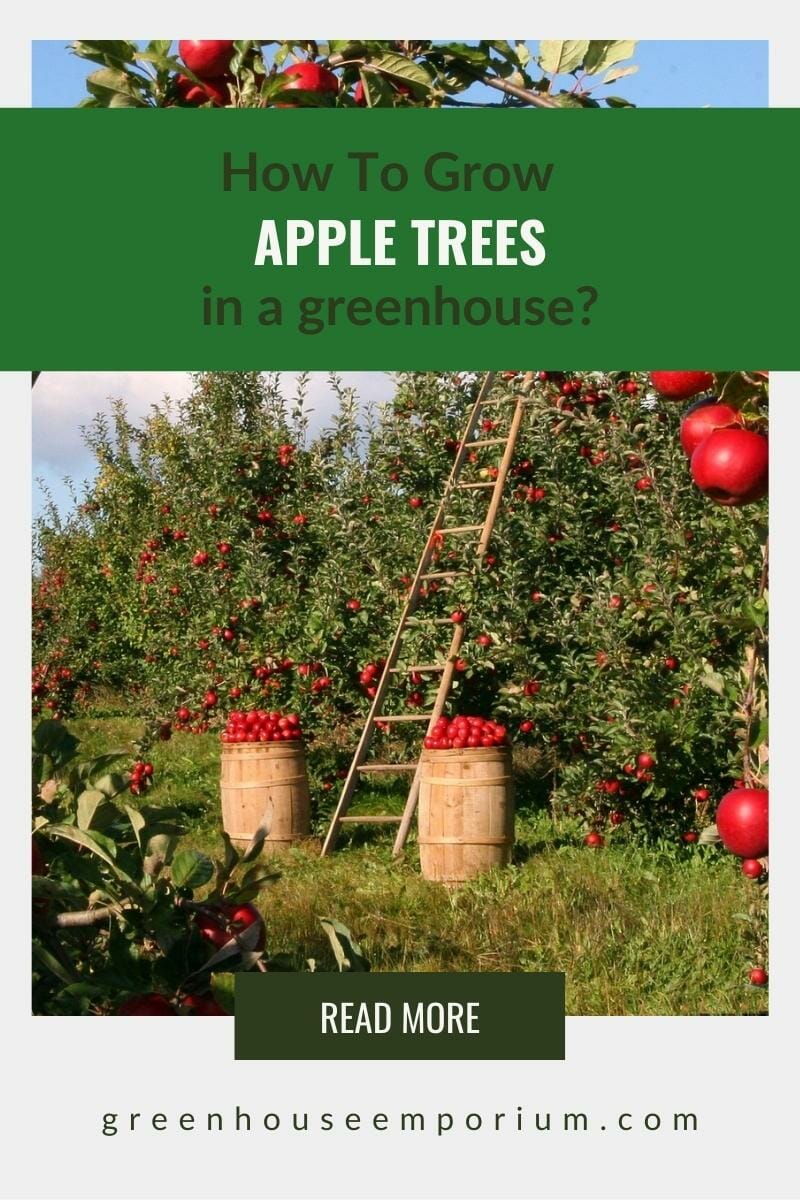
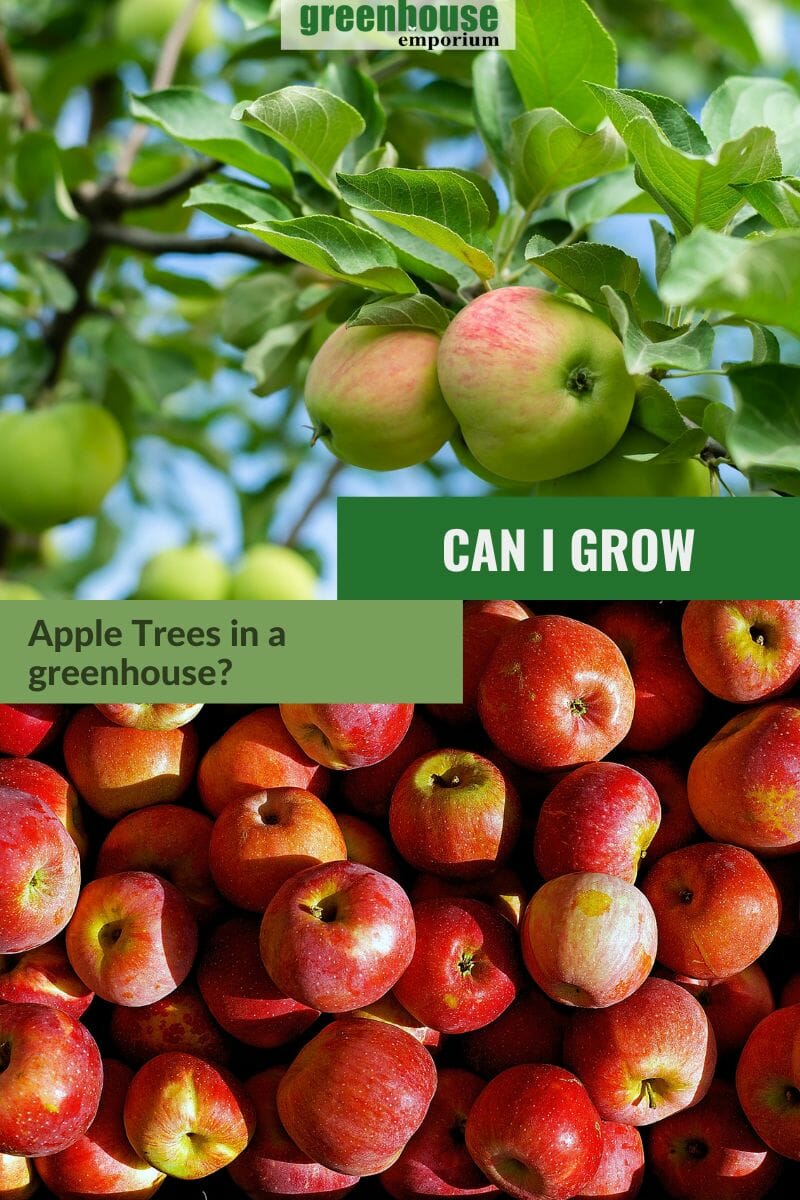
Are you curious about growing apple trees in a greenhouse? The apple tree is one of the most well-known and commonly grown trees in North America, producing crisp fruit that humans have been eating for eons. But is it possible to harvest apples from trees grown in a greenhouse?
Although apple trees are among the more challenging fruit trees to grow in a greenhouse, it’s certainly not impossible! To grow apple trees in a greenhouse successfully, it’s most important to pick the right varieties and ensure they get enough “chill hours” in order to properly develop fruit.
Despite the challenges of growing apple trees in a greenhouse, the right planning, preparation, and prevention can ensure a healthy crop of fruit.
In this article, we’ll guide you through the process of growing apple trees in your greenhouse, from picking the right varieties to providing proper care.
Can you grow apple trees in a greenhouse?
Before you go rushing off to the store to buy apple trees, it’s important to understand whether it’s even possible in the first place. The answer isn’t as straightforward as you might imagine. Yes, you can grow apple trees in a greenhouse, but it’s not easy.
That’s because apple trees need the chill of winter in order to properly set and develop fruit. Complex breeding has resulted in certain low-chill varieties, but all apple trees need extended exposure to temperatures below 45℉.
So, in order to grow apple trees in a greenhouse setting, the greenhouse needs to be cold (unheated) in the winter. You also need to make sure that when it comes time to flowering, pollinators such as bees and flies have access to the greenhouse.
Why grow apple trees in a greenhouse?
As you can see, growing apple trees in a greenhouse setting isn’t easy. So why try? For some gardeners, the thrill of the challenge is enough motivation. For some northern growers, the growing season might be too short to properly grow fruit, so greenhouses offer an opportunity to extend the growing season.
Whatever your reasoning for wanting to try your hand at growing apples in a greenhouse, we’re here to guide you.
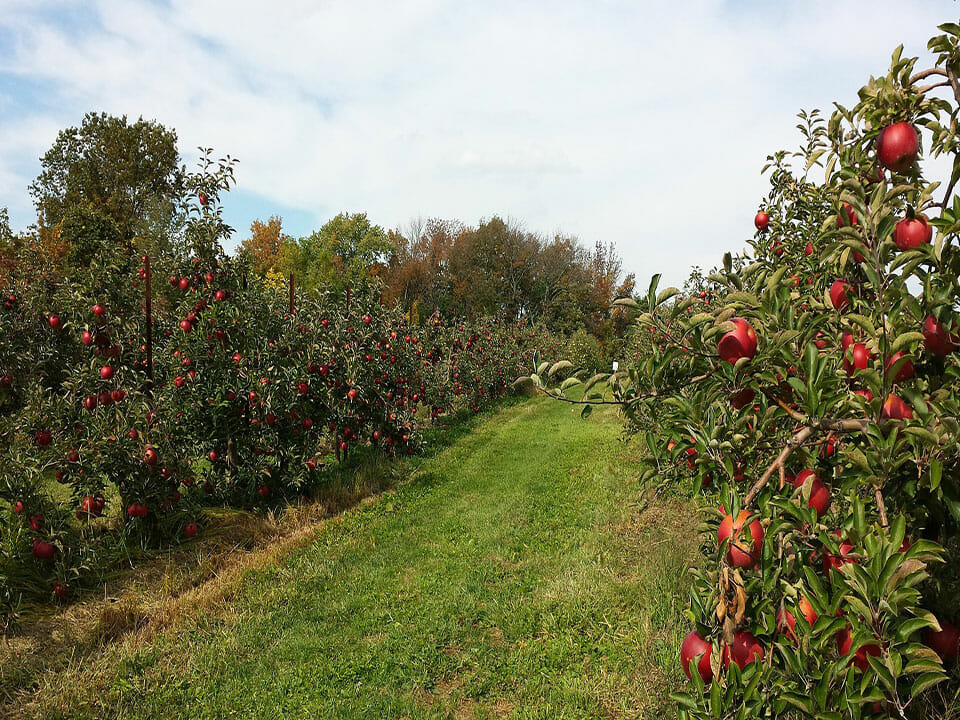
How many apple trees do I need?
Apple trees are partially self-fruitful, but to ensure adequate pollination, it’s important to have at least 2 trees of different varieties that bloom at the same time.
If you only have space for one apple tree in your greenhouse, you can graft a different apple tree’s branch onto your tree, or put apple blossoms of another tree in your greenhouse when your apple tree blooms.
Which apple tree varieties are best suited for greenhouses?
When choosing which type of apple tree to grow in your greenhouse, there are a few factors that you should consider:
First, you’ll want to consider the height of your greenhouse. Standard apple trees grow quite tall, reaching up to 30 feet when mature. As a result, we recommend choosing dwarf varieties, which usually grow no more than 30-60% of the standard size. If you have a very large greenhouse or hoop house, you could opt for a semi-dwarf variety.
Dwarf varieties are generally considered easier to grow and maintain than their semi-dwarf cousins. Plus, they can still bear a great crop of full-sized fruit!
Still, there are thousands of different apple varieties, so choosing which ones to grow in a greenhouse is a daunting task.
We’ve narrowed it down to 7 varieties that are proven to perform well:
| Type of apple tree | Dwarf size | Semi-dwarf size |
| Cortland | 12-15 feet | 14-18 feet |
| Early Pink Lady | 12-15 feet | 14-18 feet |
| Empire | 8-10 feet | 12-15 feet |
| Fuji | 10 feet | 10-15 feet |
| Gala | 10 feet | 12-15 feet |
| Spartan* | 12-15 feet | 14-18 feet |
| Pink Lady | 10 feet | 12-15 feet |
*Mini variety 6-9 feet
Another factor that you’ll want to consider is the spread. Not only can apple trees grow quite tall, but they’ll also grow in width. Semi-dwarf trees typically spread about 8-14 feet, while dwarf trees spread approximately 3-6 feet. Keep this in mind when designating a space for your apple trees in the greenhouse.
How to plant apple trees in a greenhouse
Now that you’ve chosen which apple trees you’d like to grow in your greenhouse, it’s time to plant them! The best time to plant an apple tree is in early spring before the buds begin to swell. We recommend buying trees that are already grown and ready to plant.
You have two options for growing apple trees in a greenhouse: planting them directly into the ground or planting them in a container.
Planting in the ground
Planting an apple tree directly into the soil allows it to grow and develop to its full potential. However, it does sacrifice a certain amount of flexibility, especially in the greenhouse.
If you choose to plant your apple tree in the ground, the tree will be more protected from frost. To make sure it gets adequate chill hours, make sure to keep your greenhouse cold during the winter. This means you can’t grow warm-season plants at the same time.
To plant your apple tree directly in the ground, dig a hole that’s twice as wide and a little deeper than the tree’s root ball.
If you live in an area with clay soil, mix some sand and compost into the hole to improve drainage. Set the tree in the hole so that the roots are spread out evenly, then backfill with soil and water well.

Planting in a container
Although we wouldn’t usually recommend growing fruit trees in containers, it offers a certain advantage for the greenhouse. Apple trees grown in containers can be moved around or even moved outdoors during the winter, giving them the chill hours they need to set fruit.
If you plan to do this, make sure that your greenhouse door is large enough to fit a mature apple tree. You may also need a dolly or other means to transport a fully mature apple tree, as they can get quite heavy.
To plant an apple tree in a container, first select a pot with plenty of drainage.
Use a well-draining soil mix and add compost to ensure that your apple tree gets plenty of nutrients for a healthy start.
Plant your apple tree with the graft (the prominent bulge toward the bottom of the tree) level with the lip of the pot. You may also want to stake the tree to give it extra support.
How to care for apple trees in a greenhouse
The hardest part of growing apple trees in a greenhouse is selecting the right varieties for your climate, space, and needs. Once you’ve done that, you just have to make sure that the apple trees get all the care they need to thrive.
Let’s take a look at the ideal growing conditions for apple trees in a greenhouse:
Temperature
The temperature in your greenhouse during the growing season is between 55°F and 75°F. If the temperature gets too hot, the leaves and/or flowers can begin to wilt and fall off.
That said, apple trees need a certain amount of chill hours (a period of time when temperatures are between 32°F and 45°F) in order to produce fruit. This is extremely important for the growth and production of apples.
If you live in an area with a mild climate, we don’t recommend growing apple trees in a greenhouse. If you must, you should choose low-chill varieties, and supplement with cold if necessary.
Soil conditions
The soil in your greenhouse should be well-drained and rich in organic matter. Apple trees prefer a slightly acidic soil with a pH between 6.0 and 7.0. You can test the pH of your soil with a home testing kit or by sending a sample to your local extension office.
Don’t have a soil testing kit yet?
We recommend the SONKIR soil pH tester. It’s a reasonably priced option that provides pH level, moisture, and light.
Humidity
Apple trees need high humidity to produce fruit, so it’s important to keep the air in your greenhouse moist. You can do this by running a humidifier or by placing a tray of water near the base of the tree. Be sure to empty and refill the tray regularly to prevent mold from developing.
Watering
Water your apple tree deeply and evenly, keeping the soil moist but not soggy. Be sure to water early in the day so that the leaves have time to dry before nightfall. Apple trees are susceptible to fungal diseases if their leaves stay wet overnight.

Fertilizing
To keep your apple tree healthy, fertilize it in early spring with a balanced fertilizer. Use a balanced fertilizer high in nitrogen, phosphorus, and potassium. Apply the fertilizer according to the manufacturer’s directions.
Pruning
Proper pruning is essential to the health and productivity of your apple tree. The best time to prune is in late winter or early spring before the tree begins to grow.
Start by removing any dead, diseased, or damaged branches. Then, cut back any crossed or rubbing branches. Finally, thin out the canopy to allow light and air to reach the inner branches.
If you live in an area with a long growing season, you may be able to get two crops of apples from your tree each year. To do this, prune the tree back heavily in late winter or early spring so that it doesn’t produce too much fruit all at once. This will also help to keep the tree a manageable size for your greenhouse.
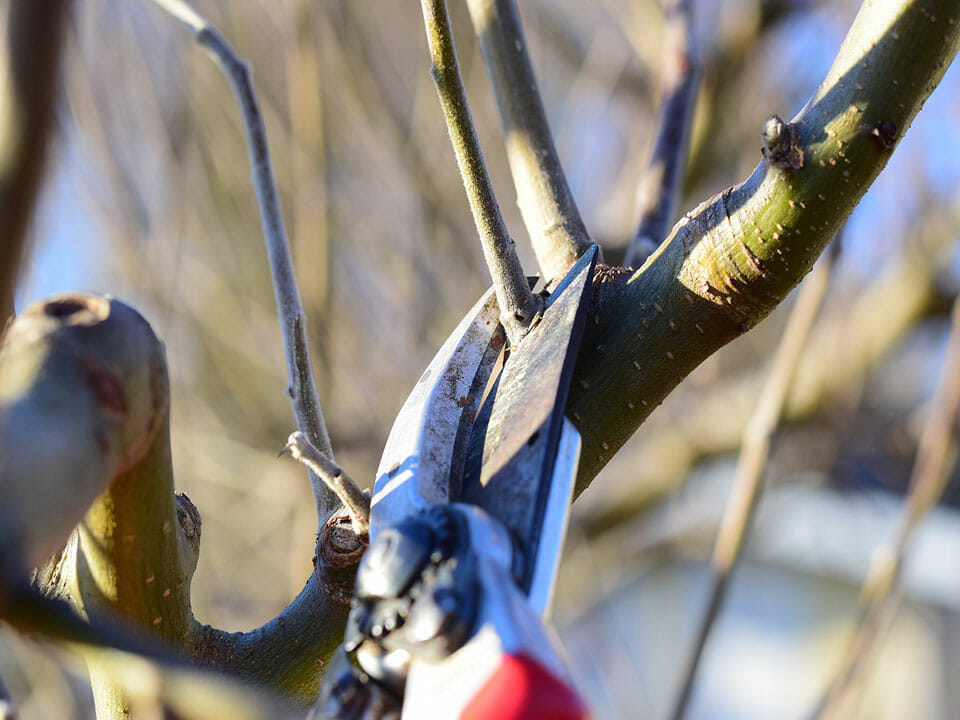
Common issues with apple trees grown in a greenhouse
One of the most common problems when growing apple trees in a greenhouse is that they can get leggy if they’re not getting enough light. Make sure to give your apple tree a minimum of 6 hours of direct sunlight every day.
Another common problem is when the apples themselves are small and/or misshapen. This is usually because the tree isn’t getting enough pollination. To combat this, you can hand-pollinate your apple tree with a paintbrush or Q-tip, add a bouquet of apple blossoms in your greenhouse, or allow bees and other pollinators inside.
Finally, even apple trees grown in a greenhouse can be susceptible to pests and diseases. Be sure to check your tree regularly for signs of pests or disease and treat accordingly. The most common greenhouse pests and diseases for apple trees are aphids, caterpillars, and apple scab (a fungal disease that causes dark spots on the leaves and fruit of apple trees).

Harvesting your apples
You can expect to start harvesting apples from your tree about 6 years after planting. Dwarf varieties will usually produce earlier than standard varieties, typically around the 3-year mark.
Your apple trees will be ready to harvest in late summer or early fall, depending on the variety. To check if the apples are ripe, gently twist one off the branch. It should come off easily without pulling too much of the stem with it. If the apple is still starchy, wait a few more days before picking again.
Apples can be eaten fresh off the tree or stored for later use. If you plan to store your apples, choose a dark and cool area, like a cellar or basement. Apples will keep for 1-1.5 months when stored properly.

